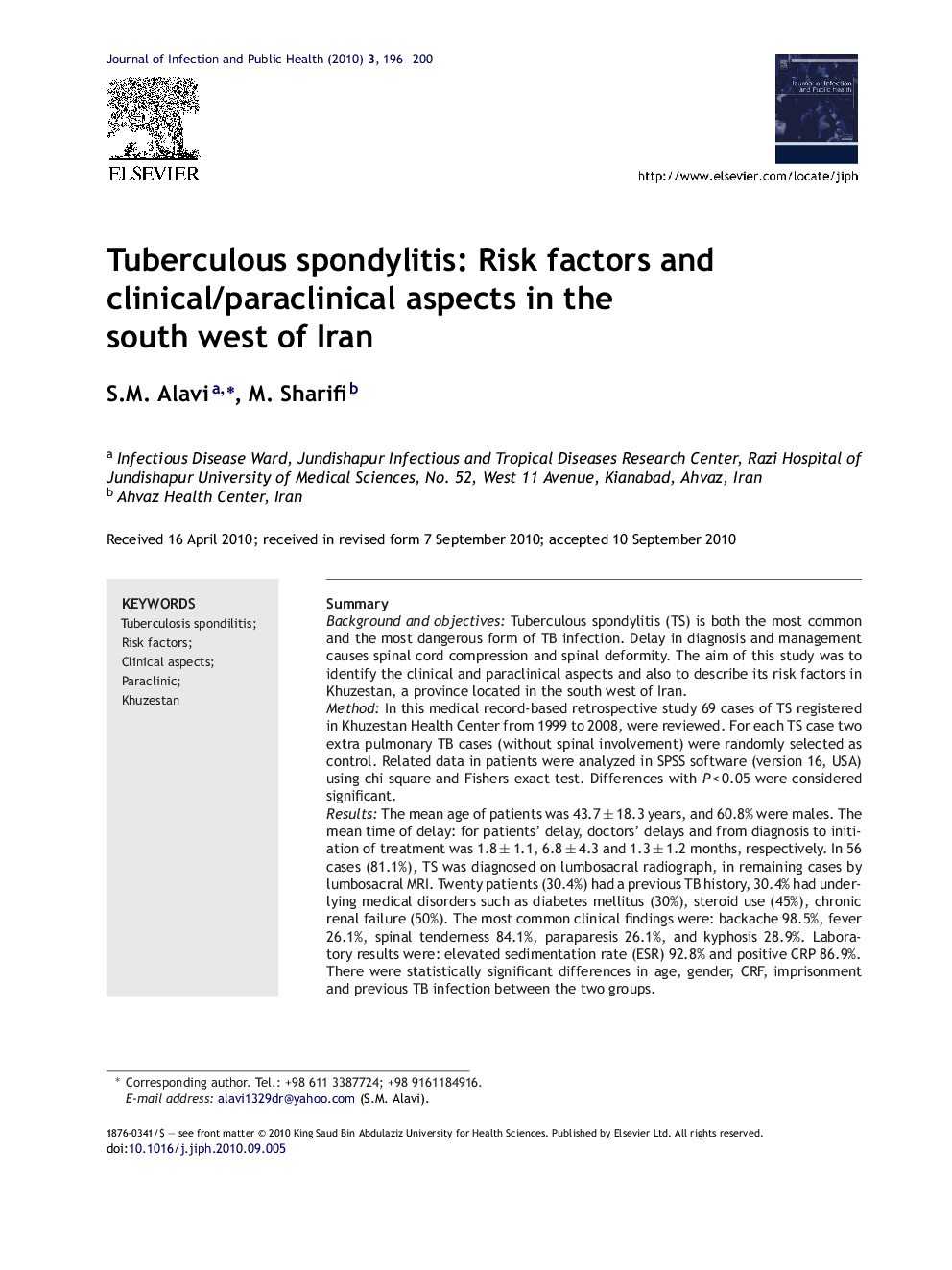| Article ID | Journal | Published Year | Pages | File Type |
|---|---|---|---|---|
| 3406243 | Journal of Infection and Public Health | 2010 | 5 Pages |
SummaryBackground and objectivesTuberculous spondylitis (TS) is both the most common and the most dangerous form of TB infection. Delay in diagnosis and management causes spinal cord compression and spinal deformity. The aim of this study was to identify the clinical and paraclinical aspects and also to describe its risk factors in Khuzestan, a province located in the south west of Iran.MethodIn this medical record-based retrospective study 69 cases of TS registered in Khuzestan Health Center from 1999 to 2008, were reviewed. For each TS case two extra pulmonary TB cases (without spinal involvement) were randomly selected as control. Related data in patients were analyzed in SPSS software (version 16, USA) using chi square and Fishers exact test. Differences with P < 0.05 were considered significant.ResultsThe mean age of patients was 43.7 ± 18.3 years, and 60.8% were males. The mean time of delay: for patients’ delay, doctors’ delays and from diagnosis to initiation of treatment was 1.8 ± 1.1, 6.8 ± 4.3 and 1.3 ± 1.2 months, respectively. In 56 cases (81.1%), TS was diagnosed on lumbosacral radiograph, in remaining cases by lumbosacral MRI. Twenty patients (30.4%) had a previous TB history, 30.4% had underlying medical disorders such as diabetes mellitus (30%), steroid use (45%), chronic renal failure (50%). The most common clinical findings were: backache 98.5%, fever 26.1%, spinal tenderness 84.1%, paraparesis 26.1%, and kyphosis 28.9%. Laboratory results were: elevated sedimentation rate (ESR) 92.8% and positive CRP 86.9%. There were statistically significant differences in age, gender, CRF, imprisonment and previous TB infection between the two groups.ConclusionTS is therefore a diagnosis that attending doctors need to consider early. Patients in endemic area of TB, presenting with back pain in association with constitutional symptoms and elevated ESR and or positive CRP should be investigated to exclude TS. Older age, male gender, chronic peritoneal dialysis, imprisonment and previous TB infection may be the main risk factors of TS.
